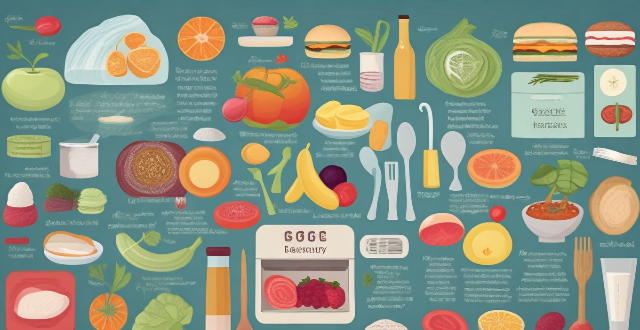The article discusses the complex relationship between climate loss and damage and food security, highlighting how extreme weather events and slower changes in climate can impact food production. It details the consequences of these impacts for food security, such as reduced crop yields, increased prices, loss of livelihoods, nutritional impacts, and displacement. The article also suggests mitigation and adaptation strategies to address this issue, including reducing greenhouse gas emissions, sustainable agriculture practices, crop diversification, improved irrigation systems, early warning systems, and research and development. The conclusion emphasizes the need for collective action to ensure food security in the face of climate change.

The Relationship between Climate Loss and Damage and Food Security
Introduction
Climate loss and damage refer to the adverse effects of climate change on ecosystems, societies, and economies. These effects can range from extreme weather events such as hurricanes, floods, and droughts to slower changes like sea-level rise and ocean acidification. Food security, on the other hand, is defined as the ability of a population to obtain sufficient, safe, and nutritious food to meet its dietary needs and maintain a healthy life. The relationship between climate loss and damage and food security is complex and multifaceted. This article will explore this relationship in detail.
Impact of Climate Loss and Damage on Food Production
Extreme Weather Events
- Hurricanes and Floods: These events can destroy crops, damage irrigation systems, and contaminate water sources used for agriculture.
- Droughts: Droughts reduce soil moisture, which is essential for plant growth, leading to lower crop yields.
- Heatwaves: High temperatures can cause heat stress in plants, reducing their growth rate and yield potential.
Slower Changes in Climate
- Sea-Level Rise: As sea levels rise, coastal areas become more vulnerable to flooding, which can affect agricultural land and infrastructure.
- Ocean Acidification: Acidification can harm marine ecosystems that provide food for many communities around the world.
- Changes in Precipitation Patterns: Altered rainfall patterns can lead to either too much or too little water for crops, affecting their growth and productivity.
Consequences for Food Security
Reduced Crop Yields
- Decreased crop yields due to climate loss and damage mean less food availability for both humans and livestock.
Increased Prices
- When crop yields decrease, the supply of food decreases while demand remains constant or increases, leading to higher prices.
Loss of Livelihoods
- Smallholder farmers who rely on agriculture for their livelihoods are particularly vulnerable to climate loss and damage. They may lose their crops and income, pushing them into poverty.
Nutritional Impacts
- Climate loss and damage can also affect the nutritional quality of crops, leading to deficiencies in essential nutrients like protein and vitamins.
Displacement and Migration
- In severe cases, entire communities may be displaced due to climate loss and damage, leading to food insecurity as they struggle to adapt to new environments without access to traditional food sources.
Mitigation and Adaptation Strategies
Mitigation
- Reducing Greenhouse Gas Emissions: By reducing greenhouse gas emissions through renewable energy sources and energy efficiency measures, we can slow down the rate of climate change.
- Sustainable Agriculture Practices: Practices like organic farming, agroforestry, and permaculture can help sequester carbon in soils and reduce emissions from agriculture.
Adaptation
- Crop Diversification: Planting a variety of crops that are resilient to different climate conditions can help ensure food security.
- Improved Irrigation Systems: Using modern irrigation techniques like drip irrigation can help conserve water and make agriculture more resilient to droughts.
- Early Warning Systems: Investing in early warning systems for extreme weather events can give farmers time to prepare and protect their crops.
- Research and Development: Investing in research to develop climate-resistant crop varieties and improved agricultural practices is crucial for adapting to changing climates.
Conclusion
The relationship between climate loss and damage and food security is deeply interconnected. As the impacts of climate change continue to manifest, it becomes increasingly important for governments, organizations, and individuals to take action through mitigation and adaptation strategies to ensure the continued availability of safe and nutritious food for all.